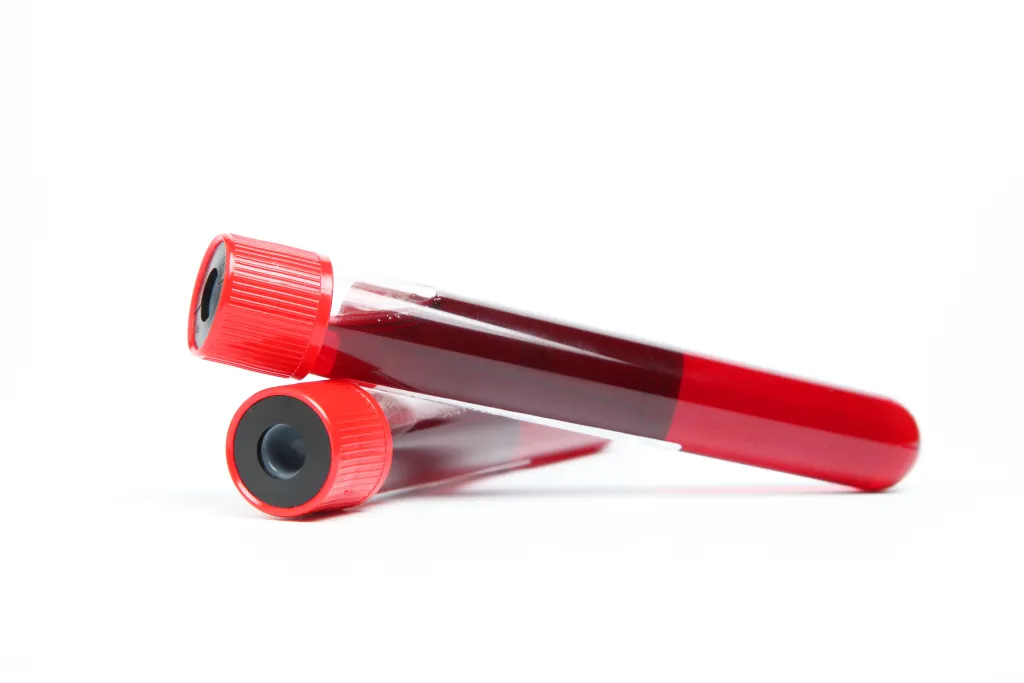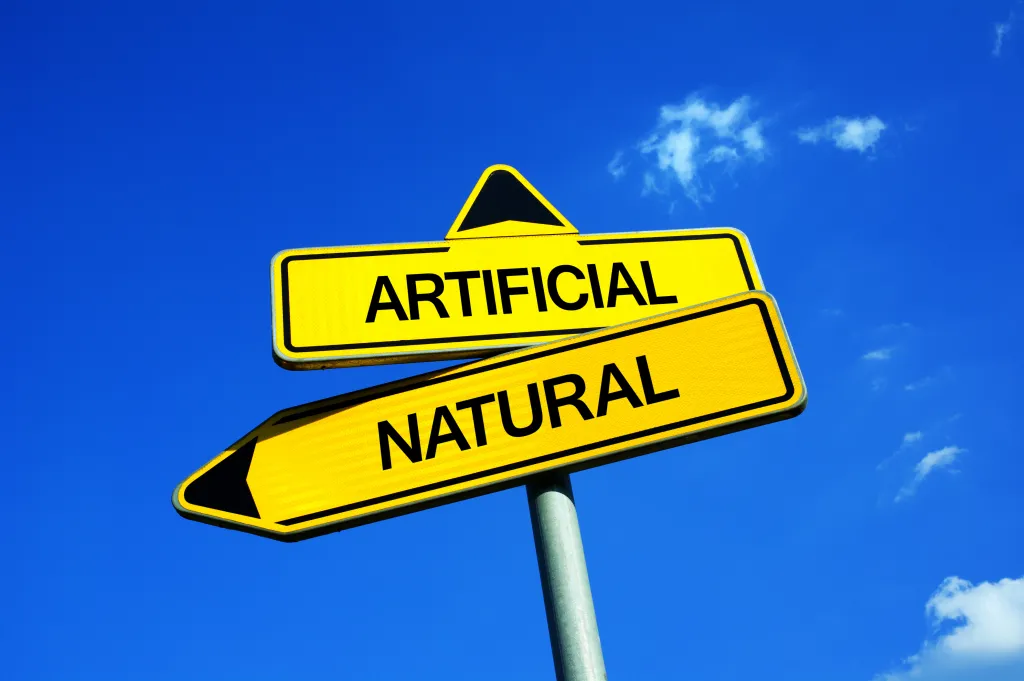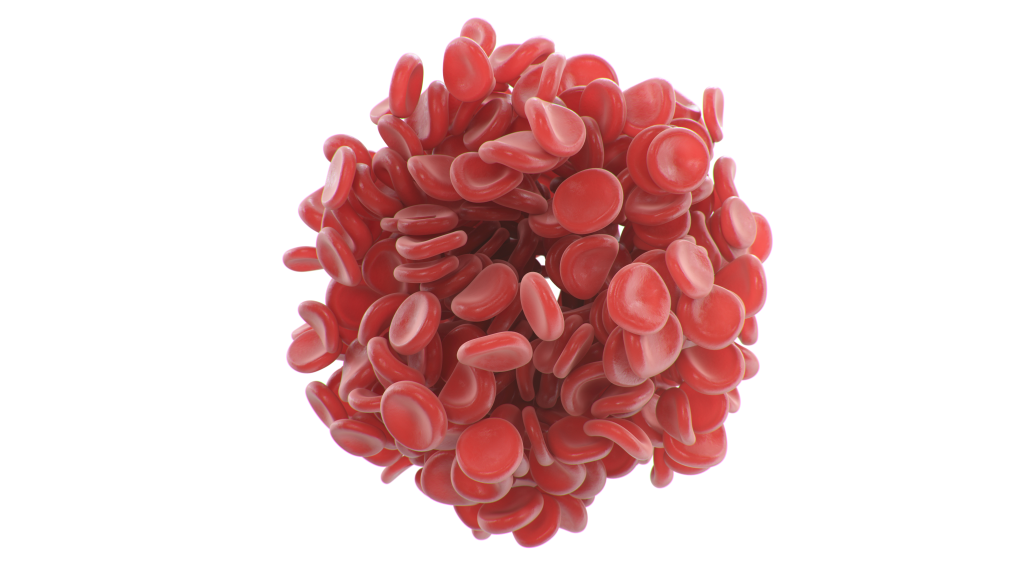At a glance
Blood clots are necessary for healing, but can be dangerous if they form excessively. Natural blood thinners, found in foods such as garlic, turmeric, fatty fish, natto, and certain nuts, can help support healthy circulation and normal clotting without the common side effects of synthetic anticoagulants.
Blood clotting, also known as blood coagulation, plays a vital role in wound healing. However, blood that coagulates too easily can form large blood clots that lead to life-threatening heart attacks, embolisms, and strokes.
Prescription blood thinners can help prevent blood clotting but often have side effects, including an increased risk of excessive bleeding and hair loss.
Fortunately, several whole foods and culinary herbs contain compounds that can naturally support healthy blood circulation and help maintain normal blood viscosity. Let’s look at six natural blood thinners that may help support healthy blood flow and normal clotting function.
Six natural blood thinners
For patients with a history of blood clots or other related medical conditions, a prescription blood thinner may be necessary to prevent dangerous blood clotting.
However, natural blood thinners can provide profound health benefits for individuals with mild blood clotting issues or those looking to promote cardiovascular health while avoiding the side effects of synthetic blood thinning agents.
Here are six natural blood thinners that may help reduce the risk of blood clots.
1. Vitamin E
Research published in Life highlights “vitamin E as an important micronutrient for vascular health.”1
Vitamin E is a fat-soluble antioxidant found in foods such as nuts, seeds, eggs, meat, fish, and green leafy vegetables. It plays a vital role in protecting cells from oxidative stress and damage caused by free radicals.
In addition to its antioxidant properties, vitamin E may support healthy blood flow by promoting the release of prostacyclin, a compound that relaxes blood vessels, reduces platelet aggregation, and can help slow down blood vessel thickening.
2. Garlic
Garlic has long been recognized for its cardiovascular-supportive properties.
The primary active compound in garlic, allicin, has shown potential to help reduce blood clotting and improve circulation. Allicin may also promote normal endothelial function, which is essential for the health of blood vessels and linked to a lower risk of heart disease.
This has been confirmed by research published in the Iranian Journal of Pediatric Hematology and Oncology, suggesting that high garlic intake was linked to reduced platelet aggregation.2
3. Natto
Natto, a traditional Japanese dish made from fermented soybeans, contains high concentrations of nattokinase, an enzyme which has been studied for its unique effects on blood flow.
Nattokinase may support healthy circulation due to its fibrinolytic activity. This natural process breaks down fibrin, the protein mesh that stabilizes blood clots.
Natto offers additional benefits, including high levels of natural vitamin K2, which is also important for vascular health.
Watch the video below to learn how natural blood thinners can support your cardiovascular health.
4. Turmeric
Turmeric is a bright yellow spice belonging to the ginger family. It’s a rich source of curcumin, a phytochemical with anti-inflammatory and anticoagulant properties.
Curcumin may support normal clotting function by inhibiting the activity of certain enzymes involved in blood clotting and platelet aggregation, and help reduce oxidative stress.
For best results, turmeric is often paired with black or white pepper, which can enhance curcumin absorption by up to 2000 percent. Combining turmeric with a source of healthy fat, such as olive oil or ghee, can also improve bioavailability.
5. Apple cider vinegar
Raw, unfiltered apple cider vinegar contains acetic acid, a naturally occurring compound formed during fermentation. Acetic acid has been shown to have mild anticoagulation properties that may be beneficial in lowering the risk of blood clot formation.
Additionally, apple cider vinegar supports mineral absorption, digestive enzyme activation, healthy blood sugar balance, and has anti-inflammatory effects, all of which contribute to better metabolic health and vascular function.
6. Fatty fish
Fatty fish, including salmon, sardines, mackerel, and cod, are among the best dietary sources of omega-3 fatty acids, which are critical for cardiovascular and cognitive function.
Omega-3 fatty acids have been shown to offer several potential health benefits, including reducing inflammation, improving heart health, and reducing the risk of blood clots.
Research published in Open Heart notes, “The incorporation of omega-3s in red blood cells seems to decrease whole blood viscosity and increase red blood cell flexibility, thus likely reducing the risk of thrombosis.”3

What are blood thinners?
Blood thinners, also called anticoagulants, don’t actually make blood thinner. Instead, they help prevent blood clots from forming or growing larger.
A blood clot, or thrombus, is a gel-like mass of red blood cells and proteins. Clots can obstruct the flow of oxygen-rich blood to tissues and organs, which can lead to serious health consequences, including stroke and heart attacks.
Blood thinners primarily work by interfering with the body’s natural blood clotting process, which can be beneficial after surgery or in certain medical conditions.
Individuals with congenital heart defects, deep vein thrombosis, or pulmonary embolism may require blood-thinning medications to reduce their risk of excessive clotting and related health issues.

Natural vs. synthetic blood thinners
Natural blood thinners are certain foods and plants that may support normal blood flow and clotting function. Natural compounds found in these foods can help modulate inflammation or influence clotting factors, contributing to healthy circulation.
Compared to synthetic blood thinners, which are prescription medications designed to block proteins involved in clotting, natural blood thinners may help you avoid potential side effects of blood thinning medications, including hair loss, gastrointestinal issues, headaches, and joint issues.
While natural compounds may offer gentle support, they may be less potent than synthetic options, and they shouldn’t replace prescribed therapies without medical supervision.
Common synthetic blood thinners, such as warfarin or heparin, require careful monitoring and dosage adjustments to avoid complications such as excessive bleeding.
If you’re taking a prescription anticoagulant, always consult your healthcare provider before introducing foods or herbs with natural blood-thinning properties.

Health benefits of blood thinners
Supporting normal blood flow and healthy clotting mechanisms is essential, especially for individuals at increased risk of blood clotting.
Insulin resistance, obesity, chronic inflammation, high sugar intake, and hormonal imbalances can all contribute to increased blood clotting. This heightened tendency raises the risk of clots forming in critical areas such as the heart, brain, or lungs, potentially leading to serious cardiovascular events.
Blood thinners may also help reduce abnormal clotting after surgery or prolonged immobility and support healthy circulation, contributing to a lower risk of heart attacks and stroke.

Are natural blood thinners safe?
“While prescription blood thinners are necessary in certain cases, natural compounds in foods, such as garlic, oily fish, apple cider vinegar, and turmeric, can help promote healthy blood flow,” explains Dr. Berg.
When consumed alongside a nutrient-dense, cardiovascular-supportive diet such as Healthy Keto®, natural blood thinners are generally safe and well tolerated by most individuals.
However, if you have a blood clotting disorder or are taking blood-thinning medication, it’s essential to discuss the use of natural blood thinners with your healthcare provider.
Combining natural blood thinners and prescription medications can increase the risk of excessive bleeding, heavy menstrual blood loss, and bleeding gums.
Key takeaways
- Natural blood thinners can help maintain healthy blood flow and may reduce the risk of clots, stroke, and heart attacks.
- Foods such as garlic, turmeric, fatty fish, natto, and apple cider vinegar have been found to offer beneficial anticoagulant effects.
- Prescription blood thinners have various potential side effects, and natural options are generally considered safe when part of a nutrient-dense, cardiovascular-supportive diet.
- Individuals on blood-thinning medications or those with clotting disorders should consult a healthcare provider before incorporating natural blood thinners.
- Staying hydrated and incorporating phytochemical-rich foods, such as berries, green tea, and ginger, can further support healthy circulation.
FAQ
1. What are blood thinners?
Blood thinners have anticoagulant properties that interfere with blood clotting processes and can help prevent the formation of blood clots. Despite the name, blood thinners don’t thin blood but prolong coagulation time and reduce the risk of blood clot formation.
2. Are natural blood thinners better than synthetic ones?
Natural blood thinners found in foods may help support healthy circulation and promote normal clotting function. They’re generally well tolerated and can be a helpful addition to a cardiovascular-supportive diet without common side effects linked to synthetic options.
However, synthetic blood thinners are potent drugs that may be necessary to prevent life-threatening blood clots in individuals with deep vein thrombosis, pulmonary embolism, or other types of blood clotting disorders.
3. Can I use natural blood thinners while on blood-thinning medication?
Natural blood-thinning compounds found in foods such as fatty fish, garlic, or turmeric can interact with blood-thinning medication and may increase the risk of bleeding.
It’s important to discuss using a natural blood-thinning agent in combination with anti-clotting medication with your healthcare provider to prevent bleeding complications or other potential interactions.
4. What are the best natural blood thinners?
Some of the top foods with natural blood-thinning properties include garlic, turmeric, fatty fish, apple cider vinegar, and vitamin E-rich foods such as sunflower seeds and avocado.
5. Is there a natural substitute for blood thinners?
Compounds found in natural blood-thinning foods, such as vitamin E found in nuts and seeds, curcumin in turmeric, nattokinase in natto, and allicin in garlic, have been found to offer blood-thinning properties similar to synthetic blood-thinning medication.
However, while these compounds may have blood-thinning properties, they may not be a direct substitute for prescription anticoagulants. Individuals with clotting disorders should always consult their doctor before making dietary changes or trying natural blood thinners.
6. What drinks can thin your blood?
Drinking plenty of water to stay hydrated is crucial to prevent abnormal blood clotting. In addition, apple cider vinegar drinks, green tea, and ginger tea have been found to promote healthy blood coagulation.
7. What fruit is a natural blood thinner?
Cranberries and blueberries contain salicylate, a naturally occurring phytochemical with potential blood-thinning properties.
8. Are natural blood thinners safe to use?
Using natural blood thinners is generally well-tolerated and safe. However, it’s best to discuss their use with your doctor, especially if you take anticoagulant prescription medication or have a bleeding disorder, to avoid the risk of excessive bleeding.
9. What is the purpose of blood thinners?
Blood thinners help support healthy blood flow by interfering with the body’s clotting processes, making it harder for clots to form or grow.
This can help lower the risk of blood clots obstructing circulation, which is especially important after surgery or for individuals with congenital heart disease, deep vein thrombosis, or pulmonary embolism.
10. What are the health benefits of natural blood thinners?
Natural blood-thinning compounds found in foods, such as turmeric, apple cider vinegar, and garlic, support cardiovascular health and offer blood-thinning effects without the same risk of side effects of blood-thinning medications, including hair loss, stomach pain, and headaches.
Sources
- https://www.mdpi.com/2075-1729/12/2/310 ?
- https://pmc.ncbi.nlm.nih.gov/articles/PMC3915434/ ?
- https://pmc.ncbi.nlm.nih.gov/articles/PMC6546183/ ?

















